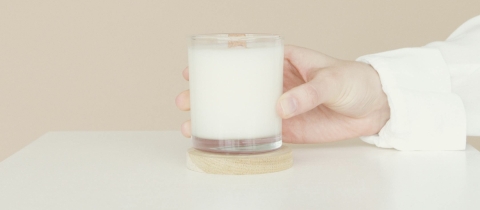So you’re walking down the refrigerated section of the grocery store and you see all the milks lined up. You got the 3.5s, the 2s, and those watery skims. But then you see some different coloured caps, which indicate “lactose-free”. And the only thing you know about this type of milk is that your sister can drink it. But what exactly does it mean when a dairy product claims that its lactose content has been modified – or “freed” – to ease digestion?
Well to understand “lactose-free” we need to understand how lactose gets digested.
First off, lactose intolerance is one of the most widely seen dietary problems in the world. Over 70% of Asians are affected but only about 20% of North American adults of European origin. Lactose is a sugar found in milk and is the culprit in triggering of symptoms which usually include bloating, gas and intestinal cramps.
Lactose is a “disaccharide”, meaning that it is made up of two smaller molecules, namely glucose and galactose. People who do not have lactose intolerance possess the lactase enzyme, which breaks the bonds linking glucose and galactose thereby liberating them of each other. These are then absorbed into the bloodstream. Lactose itself cannot be absorbed and if there is a lack of the lactase enzyme, then lactose builds up in the digestive tract. This draws fluid into the small intestine causing diarrhea and often a very urgent need to run to the washroom. At the same time, the unabsorbed lactose molecule serves as food for intestinal bacteria, which then produces gas as a by-product. The buildup of gas can cause bloating, pain and flatulence.
Most lactose intolerance is genetic. Populations that have not had milk as a mainstay of their diet have slowly lost the need to digest lactose, which explains the high prevalence in Asian populations. But lack of lactase can also be due to intestinal diseases such as celiac or Crohns. The use of antibiotics, such as neomycin can also cause enzyme deficiency.
If you think you have lactose intolerance, your doctor can easily do a diagnostic test where they test your breath after eating dairy. What they are looking for here is hydrogen gas, since this gas is produced when lactose is fermented by bacteria in the intestine. If the test comes out positive and lactose intolerance is diagnosed, don’t be so quick to toss out all of your dairy products right away. Because this is where the modification comes in. Dairy products can be easily modified to assist with digestion in lactose-intolerant people. “Modifying lactose” simply means adding the lactase enzyme into the product so that lactose, upon consumption, is actually pre-digested breaking it down into its component parts – glucose and galactose – before it is ingested. This has shown to work very well allowing those lactose-intolerant people to happily drink lactose-modified milk.
Unfortunately, when it comes to other dairy products, such as cheese, there is no “modified” version and so this is where the Lactaid pills come into play. And you guessed it, these pills are literally the lactase enzyme, breaking up the lactose molecule into galactose and glucose so that digestion can happen easy peasy. Well, in most cases...Lactose intolerance does run along a spectrum and therefore not everybody can enjoy all of these foods equally.







